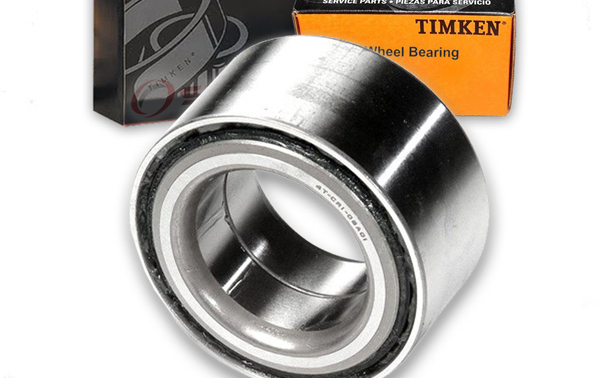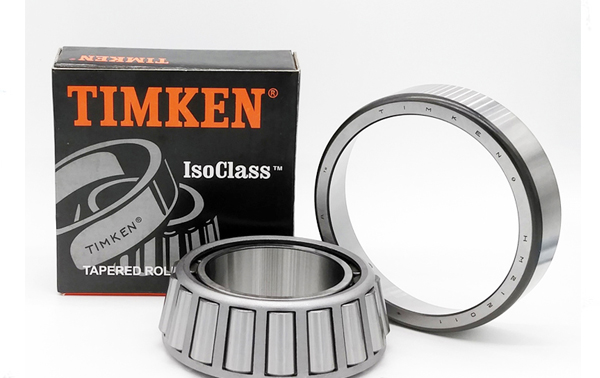Roller bearings are one of the rolling bearings and are one of the most widely used components in modern machinery. It relies on rolling contact between the main ingredients to support the rotating parts. Roller bearings are now mostly standardized. Roller bearings have the advantages of small starting torque, high rotation accuracy, and available selection.
Classification of roller bearings
Spherical roller bearing
Spherical roller bearings have double-row rollers; the outer ring has a standard spherical raceway, the inner circle has two raceways, and is inclined at an angle relative to the bearing axis. This original structure makes it have self-aligning performance, so it is not easily affected by the corner of the shaft and the bearing box seat to the error or the bending of the beam. In addition to bearing radial loads, this bearing can also support axial loads in both directions.
Spherical roller bearings have cylindrical and conical internal bores, and tapered cone bores have a taper of 1:30 and 1:12. This tapered inner bore bearing is equipped with an adapter sleeve or a withdrawal sleeve. The tapered inner hole self-aligning ball bearing can be easily and quickly assembled on the optical axis or the stepper shaft.
Thrust spherical roller bearings
Thrust spherical roller bearings are the same as spherical roller bearings. The raceway surface of the raceway is a spherical surface centered on a point consistent with the central axis of the bearing. This type of bearing roller is spherical and therefore has an automatic self-aligning function. Not very sensitive to coaxiality and shaft deflection.
Tapered Roller Bearings
Tapered roller bearings have tapered raceways on the inner and outer rings. This type of bearing is divided into single, double, and four-row tapered roller bearings according to the number of rollers installed. Single-row tapered roller bearings can support radial loads and axial loads in one direction. When the bearing is subjected to a radial load, an axial component will be generated, so when another bearing that can withstand the axial force in the opposite direction is needed to balance it.
Cylindrical Roller Bearings
Cylindrical rollers and raceways are linear contact bearings. Load capacity, mainly bear radial load. The friction between the rolling element and the ring flange is small, which is suitable for high-speed rotation. Depending on whether the ferrule has ribs, it can be divided into single-row cylindrical roller bearings such as NU, NJ, NUP, N, NF, and double-row cylindrical roller bearings such as NNU, NN. The bearing has a detachable inner and outer ring structure.
Needle bearing
Needle roller bearings are cylindrical roller bearings. Relative to their diameter, the rollers are thin and long. This roller is called a needle roller. Although it has a small cross-section, the bearing still has a high load-bearing capacity. Needle roller bearings are equipped with thin and long rollers, so the radial structure is compact. When the inner diameter size and load capacity are the same as other types of bearings, Minimal, especially suitable for support structures with restricted radial installation dimensions.

When selecting bearings, the primary considerations are as follows:
Bearing load
The magnitude, direction, and nature of the pressure on the bearing are the main factors in choosing a bearing.
When the bearing is selected according to the load, compared with the point contact of the ball bearing, the main components in the roller bearing are in line contact, which is easy to bear the load, and the deformation after loading is small.
When selecting a bearing based on the load direction, for pure axial loads, a thrust bearing is generally selected—select thrust roller bearings for larger axial forces. For smaller axial forces, thrust ball bearings are used. For pure radial loads, deep groove ball bearings, cylindrical roller bearings or needle roller bearings are generally used. When bearing radial load, but also bearing small axial load, deep groove ball bearing or tapered roller bearing can be selected; when the axial load is large, angular contact ball with more extensive contact angle can be chosen Bearings or tapered roller bearings.
Bearing speed
In general, the rate does not affect the choice of taking type, but when the price is tremendous, the cost should be included in the bearing selection criteria.
(1) Compared with roller bearings, ball bearings have a higher limit speed, so in the case of high speed, ball bearings are given priority.
(2) When the inner diameter is the same, the smaller the outer diameter, the lower the rolling element, so the lower the centrifugal force of the rolling component on the outer ring, the more suitable it is to work at high speed. According to the properties given in Table 1. needle roller bearings are more ideal for working at high rates.
Self-aligning performance of bearings
When the centerline of the shaft does not coincide with the centerline of the bearing seat, and there is an angular error, or when the rod is bent or tilted due to the force of the shaft, the axis of the inner and outer rings of the bearing will be skewed. At this time, a self-aligning bearing or a spherical ball bearing with a seat should be used.
Roller bearings are most sensitive to bearing deflection. The bearing capacity of such bearings in deviation may be lower than ball bearings. Therefore, when the shaft rigidity and the support rigidity of the bearing seat hole are weak, or when a massive deflection moment is applied, such bearings should be avoided.
Bearing installation and removal
When the bearing seat has no split surface and components must be installed and removed in the axial direction, a bearing with a detachable inner and outer ring should be preferred.

Hot Tags: